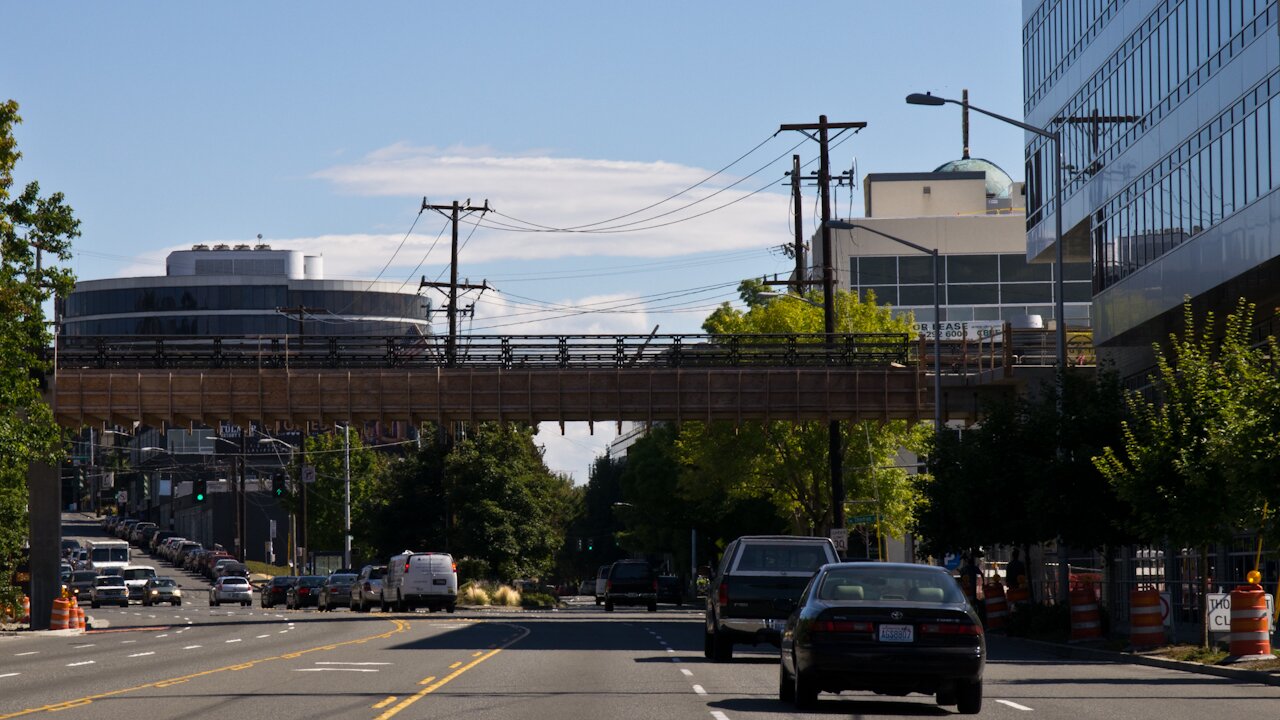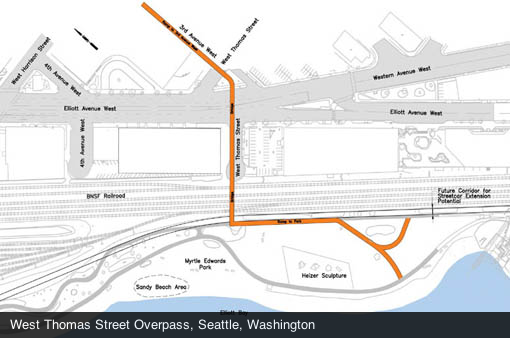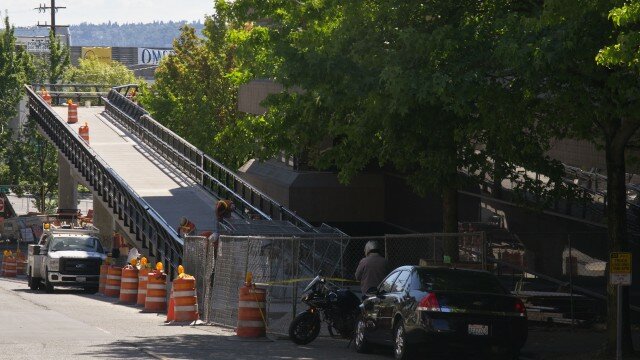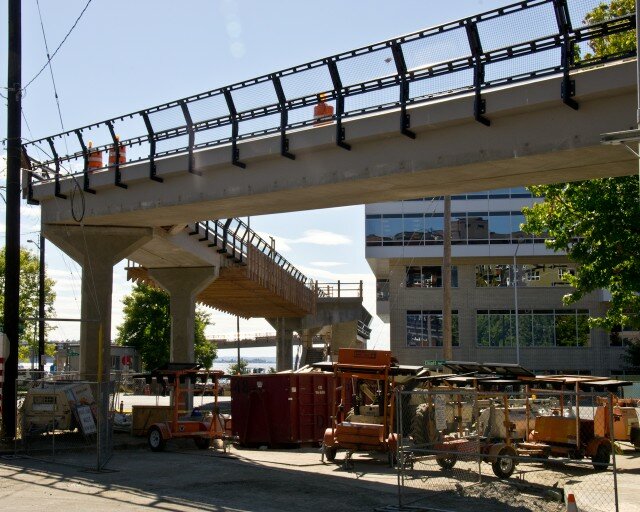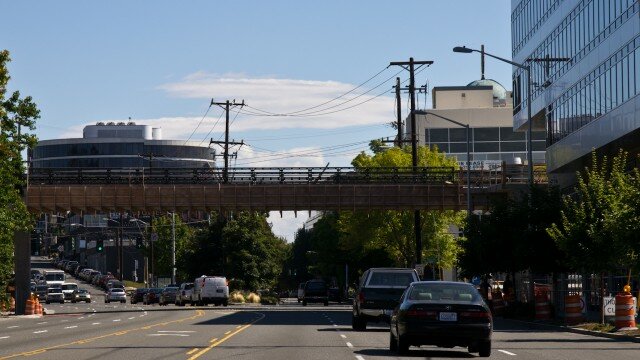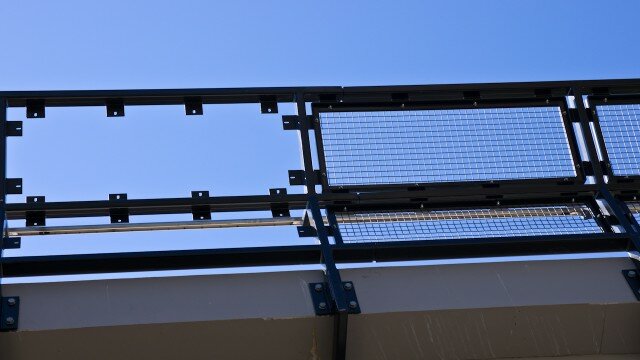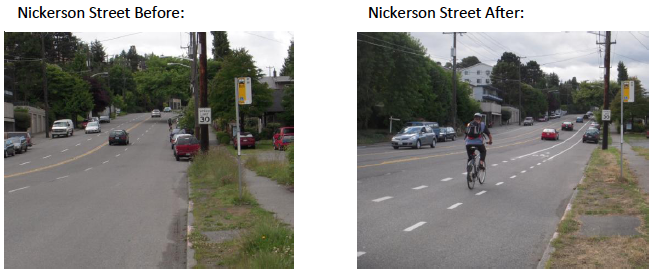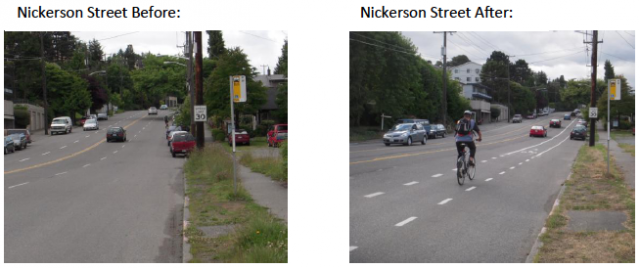Seattle police are, this morning, on the hunt for a woman who hit a 24-year-old man with her car, near the 9400 block of 11th Avenue Southwest in West Seattle. Police say it was intentional, and they know who she is. [UPDATE: KOMO says the woman has been arrested.]
A little over a week ago, West Seattle Greenways co-founder Jake Vanderplas was also the victim of an intentional hit-and-run on a new greenway. He escaped with bruises, and the officer who arrived on the scene afterwards “lamented that at times, cases like these (with no major injuries, property loss, or death) can sometimes slip through the cracks.” (If someone narrowly misses killing you with anything besides a car, you can still count on a strenuous police response.)
Now that both summer and summer weather have arrived, Seattleites are walking and biking everywhere — and getting hit, at an alarming rate, either intentionally or by drivers who never stop.
That Seattle Bike Blog story on Vanderplas unearthed another recent hit-and-run story in the comments, this time on the mean streets of Dexter and Nickerson. “Alana Martinez never saw the car” that struck her from behind, writes Tom Fucoloro, and the driver fled the scene. (View the Bikewise map to get an overall sense of the level of cycling danger.) [UPDATE: SDOT has already made improvements to that intersection, reports Seattle Bike Blog.]
Mayoral candidate Peter Steinbrueck, in a profile on the site Capitol Hill Seattle, says the need to increase safety on Seattle streets outweighs even transit: “The highest priority for me is pedestrian and bicycle safety, because those are the most vulnerable on the street and because we lose 10 to 15 people a year in pedestrian-vehicular conflict.”
Today, Mayor McGinn is holding a press conference to discuss proposals to improve safety on Northeast 75th Street, the scene of something along the lines of vehicular mass murder in March of this year. (Within days of the tragedy, residents were noting how drivers’ speeds on the street had resumed their earlier unsafe and illegal heights.)
To give you an idea of the current pace of change, though, when it comes to more significant expense than signs and paint, remember that in November 2006, 26-year-old Tatsuo Nakata was killed by a car while he was in the crosswalk at 47th and Admiral in West Seattle.
Five years later, residents were still holding memorials-slash-rallies for a traffic light. Nor were these voices crying out in the wilderness; West Seattle Blog saw “former Seattle City Councilmember David Della, for whom Mr. Nakata had worked, and current Councilmember Tom Rasmussen, who chairs the Transportation Committee, as well as ANA president Katy Walum and vice president Karl de Jong” speaking in favor of greater safety measures for the intersection.
This June, approaching seven full years after the fatality, the City Council announced they planned to fund “full signalization” (and top Mayor McGinn’s proposal of a pedestrian beacon, while they were at it).
That’s one intersection improved, but for every step toward safety, it seems the city takes several more backwards: Seattle’s Department of Transportation continues to grant developers the right to push pedestrians into the street for months at a time, with no evidence that they comprehend their complicity in creating unsafe streets.
